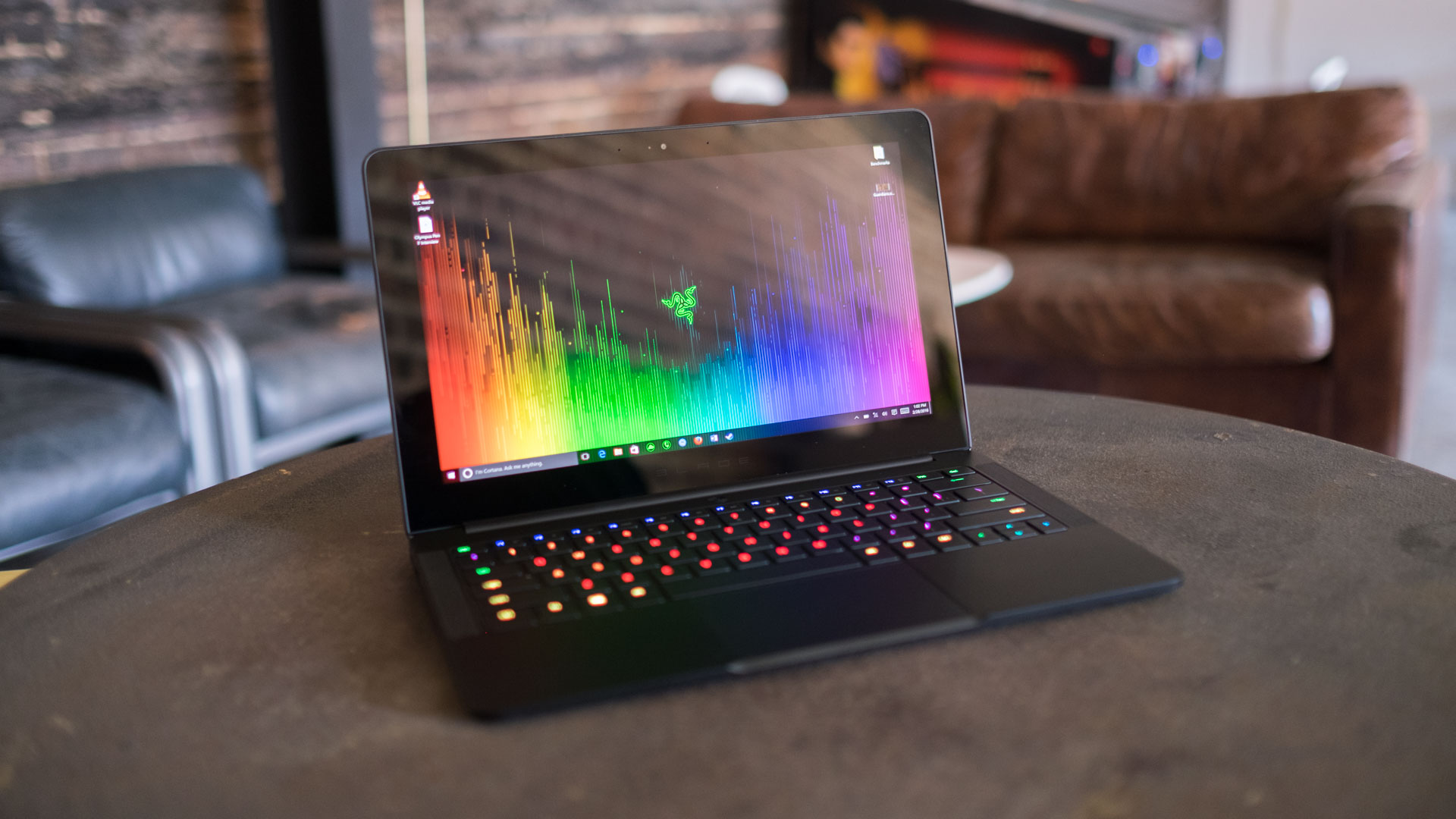TechRadar Verdict
Razer's first take on the Ultrabook format has resulted in one of the finest 12-inch laptops, but short battery life holds it back from joining the Ultrabook elite.
Pros
- +
Amazing build quality
- +
Fully customizable keyboard
- +
Vibrant and bright display
Cons
- -
Extremely short battery life
- -
Long recharging cycle
Why you can trust TechRadar
Razer has been chasing the dream of creating a capable gaming laptop that's also thin and formal enough to pass as an everyday notebook. It's an ethos that has helped spawn the compact Razer Blade gaming notebook. However, trying to strike this perfect balance has led to choosing components too underpowered for gaming and too taxing on battery life.
Now Razer is going in a different direction with the Blade Stealth, the company's first Ultrabook. It's a compact 12.5-inch laptop you can take with you everyday, and when you need gaming performance, it also connects to a desktop graphics card box.
As a notebook by itself, the Stealth is an amazingly thin piece of hardware with a beautiful screen, fast processor and a first-class keyboard. But when it comes to battery life, this 12-inch machine simply can't keep up with the Ultrabook elite, like the Dell XPS 13 and Lenovo Yoga 900.
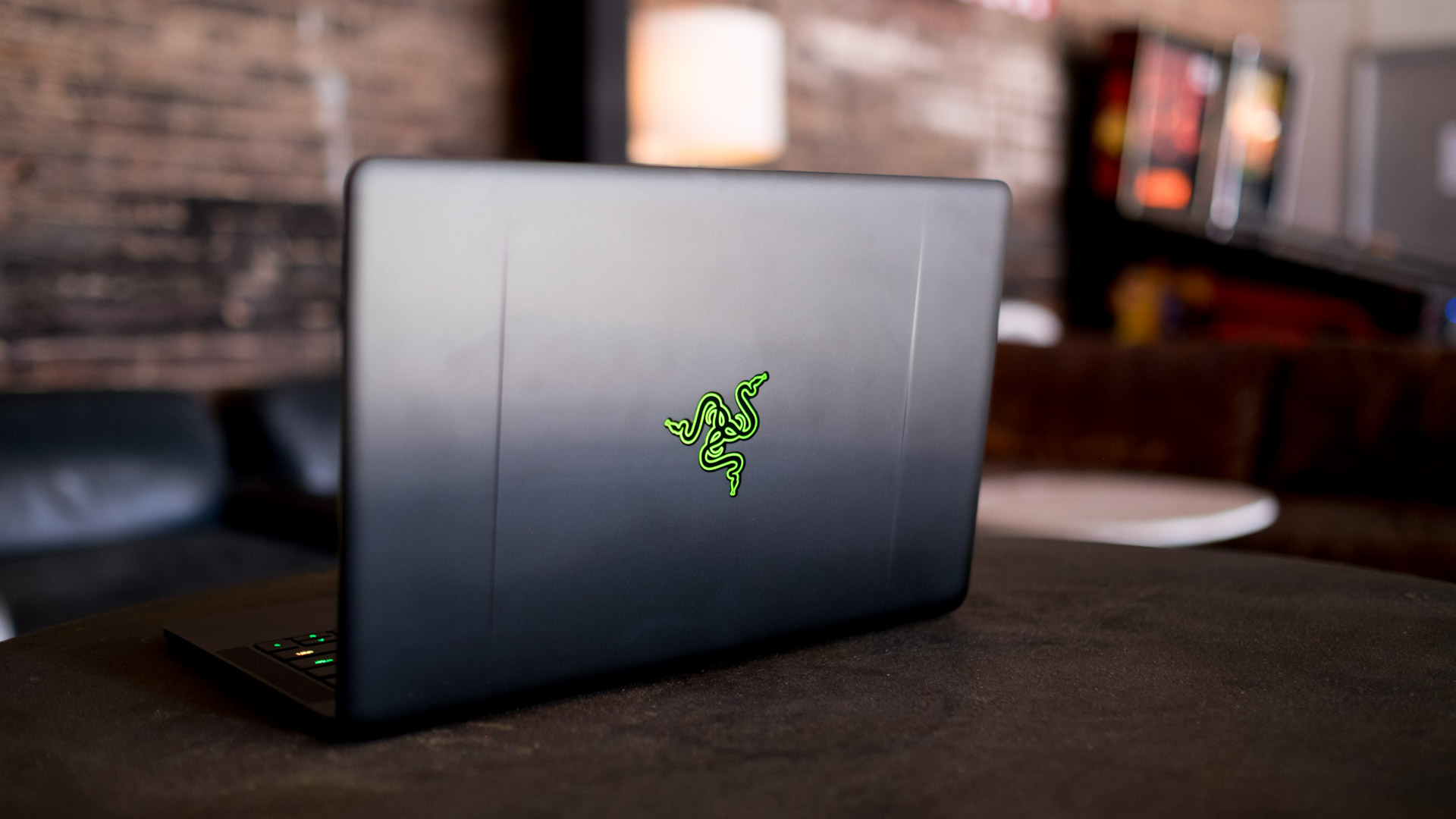
Design
Short of Apple, no manufacturer makes an all-metal laptop like Razer does. Everything from the way aluminum panels line up perfectly to the thin screen lid all speak to the Stealth's impeccable build quality.
Of course, it's a bit easier to swallow when you consider the entire device was precision cut from a block of aluminum by computer-controlled CNC machine.
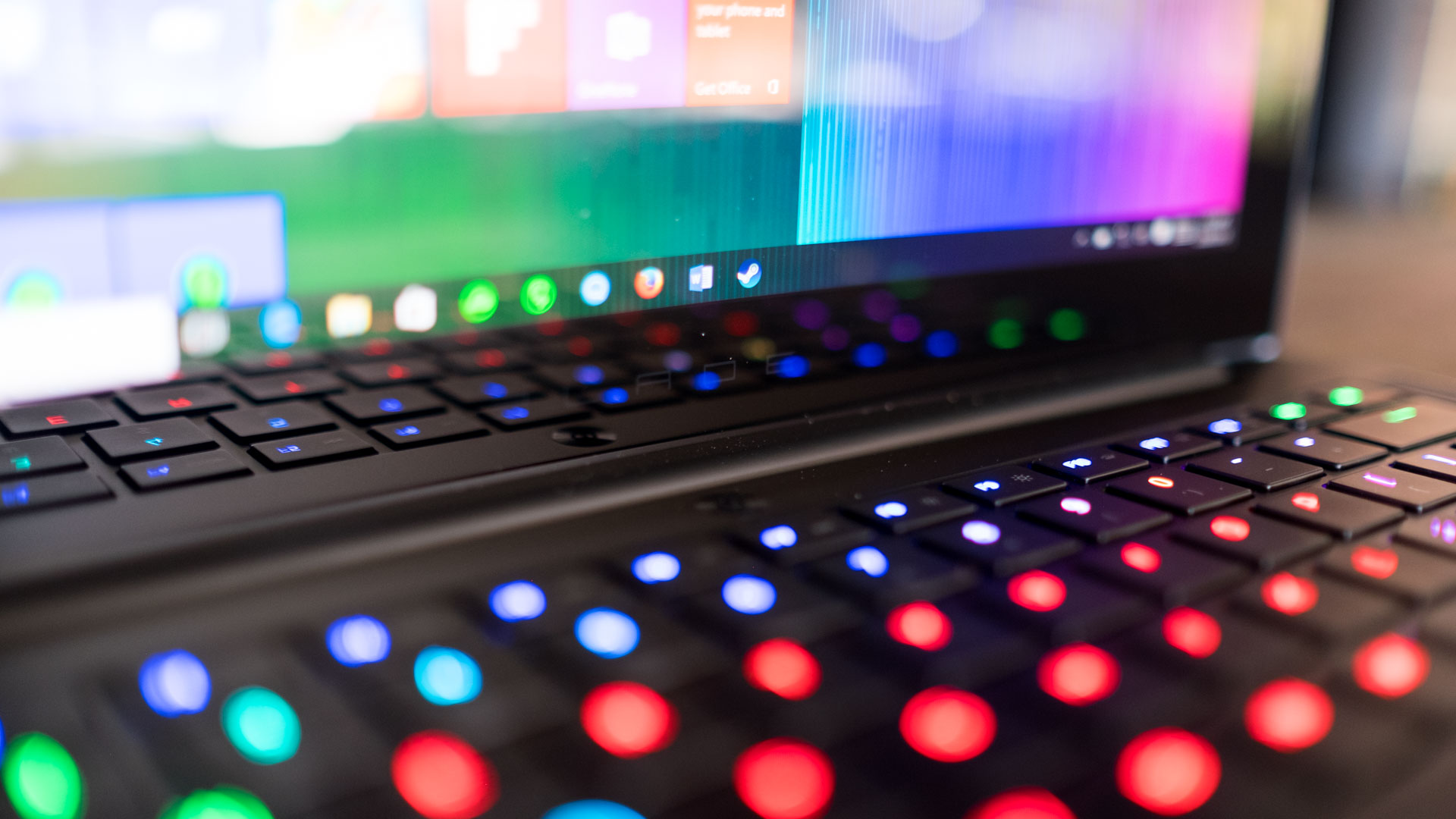
Still there's a lot to admire about the Stealth, especially it's clean and minimalistic qualities. The spun metal power button is nearly invisible and blends in with the rest of the notebook's jet black paint job. Similarly, you can barely spot the Blade logo printed onto the lower bezel unless you really look at it.
The most notable bits of flair include the two raised notches on the screen lid, but they're significantly toned down and flatter than the ridges you'll find on the Razer Blade. The company's unmistakable neon green triskelion snake logo makes its return and shatters any illusion of the Stealth being a plain business laptop. But more likely, your eyes will be drawn to the incredibly colorful keyboard.
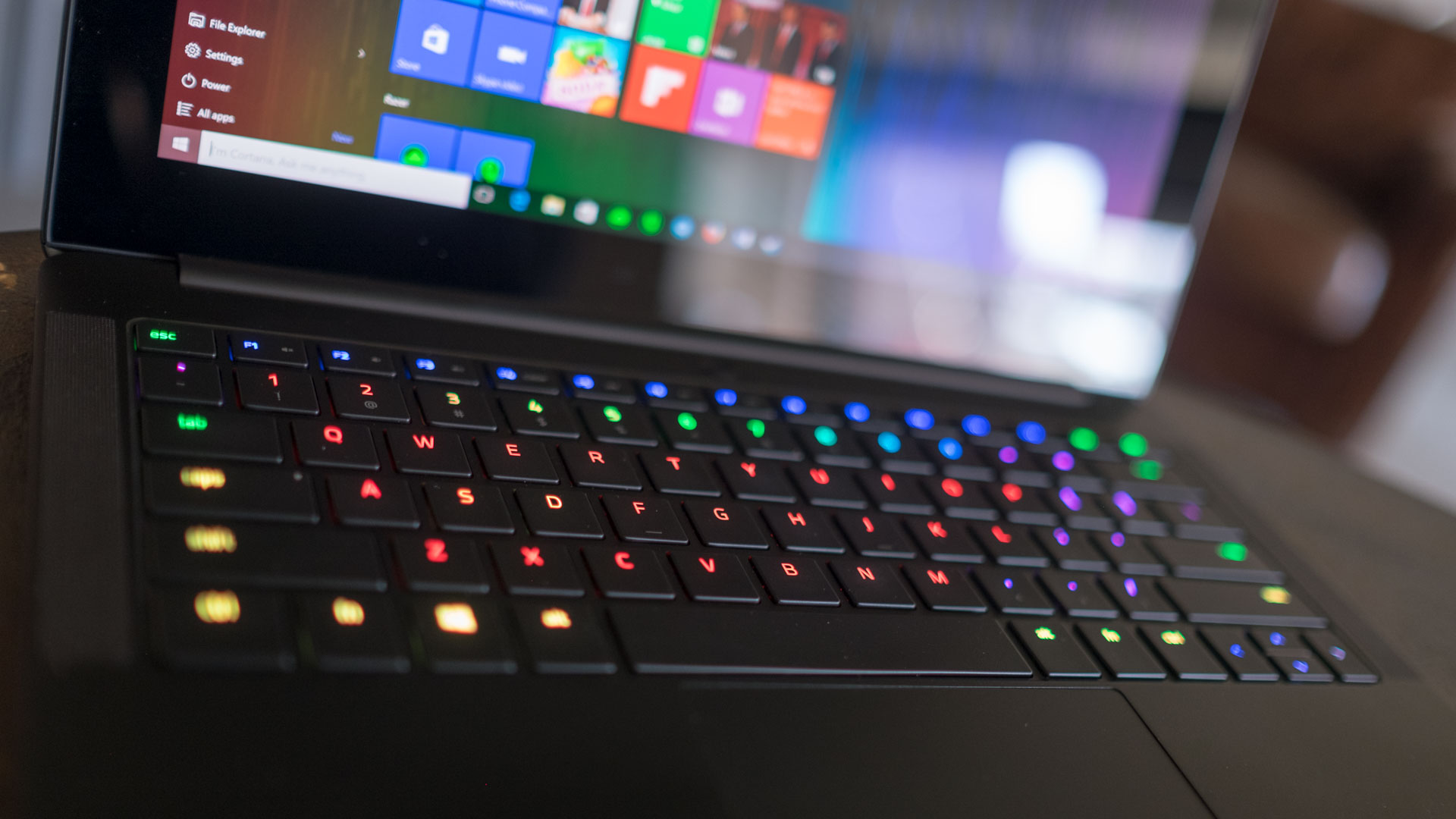
Double rainbow
The fully backlit and customizable keyboard is a spectacle to behold. Not only does it light up with every color you can think of, you can also program every single key individually.
Want WASD to show up in red, arrow keys in turquoise, and each of the number keys to display increasingly brighter shades of lavender? It can all be done in Razer's Synapse software and the level of control makes the Stealth standout from every notebook that came before it.
Full RBG backlight control has been available on desktop keyboards for some time now, but this is a first for a laptop. The extra layer of granularity is extremely superfluous, yet all so addictive. I found myself tuning the keyboard to glow red, while setting my modifiers up to be yellow and my gaming keys to display a rainbow spectrum.
For gamers, aesthetics are a big deal, and the Razer Blade Stealth is one of the finest devices I've seen in this regard.
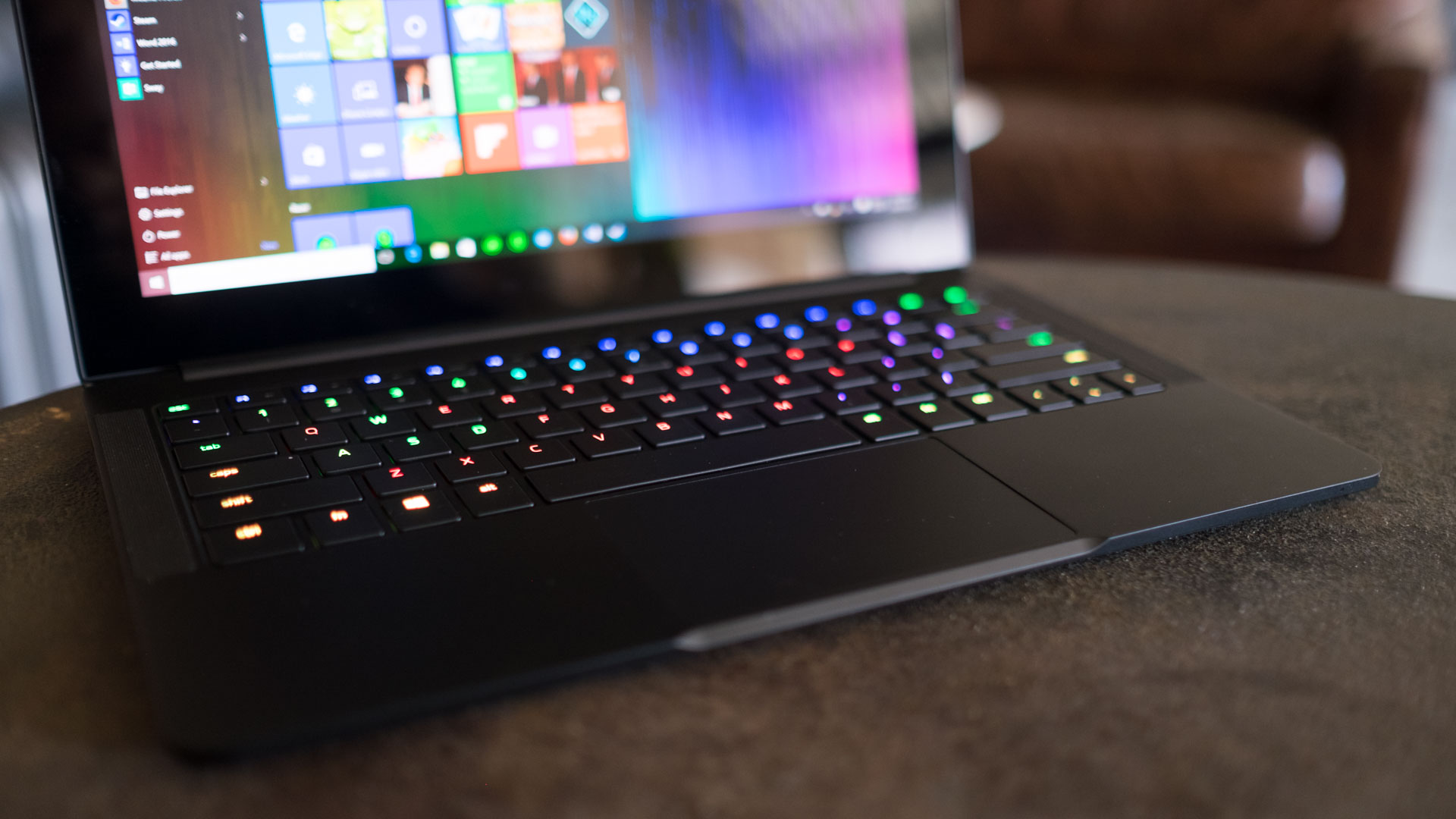
All about clicks
Lighting aside, the keyboard is spectacular in its own right. While other 12-inch devices have come with keyboards too tightly arranged or weirdly laid out, the Razer Blade Stealth has a traditional and spacious layout.
While key travel feels a bit short – about 1.5mm at best – the good news is you get an audible click letting you know you're actually hitting the keys. Likewise, you get a decent click out of the glass trackpad, which feels silky smooth.
Kevin Lee was a former computing reporter at TechRadar. Kevin is now the SEO Updates Editor at IGN based in New York. He handles all of the best of tech buying guides while also dipping his hand in the entertainment and games evergreen content. Kevin has over eight years of experience in the tech and games publications with previous bylines at Polygon, PC World, and more. Outside of work, Kevin is major movie buff of cult and bad films. He also regularly plays flight & space sim and racing games. IRL he's a fan of archery, axe throwing, and board games.
